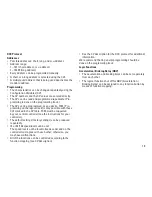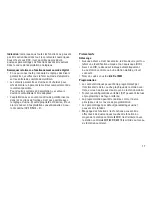
4
Informationen zum Vorbild
Die Strecken der Schweizer Seetalbahn bei Wildegg und
Beromünster waren von 1910 bis 1930 mit 5,5 kV/25 Hz elek-
trifiziert, ein Relikt aus der Privatbahnzeit. Mit der Verstaatli-
chung 1922 haben die SBB zugleich die Standardisierung des
Bahnstroms und die Beschaffung einer neuen Lokomotive
beschlossen. So waren die 1926 gelieferten 3 Maschinen
De 6/6 schon für normalen Bahnstrom 15 kV/16 2/3 Hz vorbe-
reitet.
Das „Seetal-Krokodil“ trägt seinen Namen zu Recht: die
Fahrwerkskonstruktion entspricht weitgehend der be-
rühmten SBB-Maschine.
Zwei Treibradgruppen (hier ohne Vorläufer) tragen einen
3-teiligen Aufbau. Da die Seetal-Loks jedoch wendiger und
leichter sein mussten, wurden passende mechanische Kom-
ponenten von der parallel gebauten kleinen Rangierlokomo-
tive Ee 3/3 verwendet. Jedes Treibgestell wird von einem
Motor über Blindwelle und Schrägstangen angetrieben, die
Gesamtleistung beträgt 850 kW, die 50 km/h ermöglichen.
Charakteristisch für die Maschinen sind die großen Luftein-
lässe auf der Apparateseite zur Kühlung der Transformatoren
und der einzelne Dachstromabnehmer.
Die drei kleinen Krokodile waren bis 1983 bei den SBB im Ein-
satz, seit den 1950er-Jahren vornehmlich als Rangierloks. Die
Lokomotiven 15302 und 15303 wurden im Frühjahr 1983 abge-
brochen. Die Lokomotive 15301 kam zur Oensingen-Balsthal-
Bahn, wo sie weitere 10 Jahre als Güterzuglok eingesetzt
war. Die einzig erhalten gebliebene Lokomotive 15301 wird
heute vom Verein „Seetalkrokodil 15301“ betreut.
Information about the prototype
The lines for the Swiss Seetal Railroad near Wildegg
and Beromünster were electrified from 1910 to 1930 with
5.5 kilovolts / 25 Hertz current, a leftover from the private
railroad era. When the railroads were nationalized in 1922,
the SBB took the simultaneous decision to standardize the
system of current for powering locomotives and to purchase
a new locomotive. Hence, in 1926 three of the class De
6/6 were already equipped for the standard current of
15 kilovolts / 16 2/3 Hertz.
The „Seetal Crocodile“ lives up to its name: The design for its
frame is quite similar to that of the famous SBB Crocodiles.
Two groups of driving wheels (here without pilot trucks) sup-
port a three-part body. Since the Seetal locomotives had to
be more maneuverable and lighter, suitable mechanical parts
were used from the small class Ee 3/3 switch engine built at
the same time. Each power truck frame is driven by a motor
via a jackshaft and diagonal side rods, the whole putting out
850 kilowatts or 1,140 horsepower and enabling a top speed
of 50 km/h or 31 mph. A characteristic feature of these units
are the large air intakes on the appliance side of the locomo-
tive for cooling the transformers, and the single pantograph.
These three small Crocodiles were in use on the SBB un-
til 1983, since the 1950s primarily as switch engines. Road
numbers 15302 and 15303 were scrapped in the spring of
1983. Road number 15301 came to the Oensingen-Balsthal
Railroad, where it was used for another 10 years as a freight
locomotive. This single preserved locomotive is maintained
at present by the „Seetalkrokodil 15301“ Association.
Summary of Contents for 22246
Page 1: ...Modell der Serie De 6 6 22246 D GB F USA NL ...
Page 2: ...2 ...
Page 26: ...26 ...
Page 27: ...27 ...
Page 28: ...28 40h ...
Page 29: ...29 ...





































